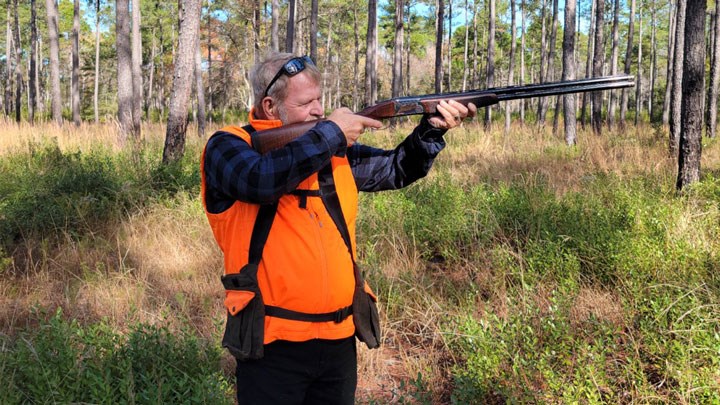
by Brian McCombie - Thursday, December 1, 2022

Despite a general lack of science supporting the need for such a ban, yet another group has called on the federal government to prohibit the use of traditional lead ammunition on federally managed lands impacting more than 50 million acres of public hunting access. The group is Public Employees for Environmental Responsibility (PEER), which sent a petition to Deb Haaland, Secretary of the Department of Interior, asking her to ban the use of lead ammunition and fishing tackle on all property managed by the National Park Service (NPS). According to the petition, filed Nov. 17, the properties PEER wants covered under the ban not only include 50-plus million acres currently open to hunting, but they compromise more than 60 percent of the land in the NPS system.
“This is yet another attack on the use of traditional ammunition by environmental extremists who ignore science and misinform policy makers,” said Jason Ouimet, executive director of the NRA Institute for Legislative Action (NRA-ILA). “The truth is these extremists want traditional ammunition banned because it discourages participation in hunting and shooting.
The PEER petition cites a recent U.S. Fish and Wildlife Service (USFWS) decision to begin a phase-out of lead ammunition and fishing tackle on some federal lands. The NRA Hunters’ Leadership Forum website, NRAHLF.org, reported on this decision earlier this year when the USFWS announced that it was increasing public access to 38,000 acres of federally managed properties in the National Wildlife Refuge System. Tucked into that announcement, though, was a proposal to phase out ammunition with lead components—despite the reality that lead ammunition does not negatively impact wildlife populations as anti-hunters claim.
As NRAHLF.org noted at the time, “According to NRA-ILA, a decrease in the purchase of traditional ammunition would adversely affect wildlife conservation funding. This is because hunters and target shooters remain the largest supporters of conservation through excise taxes levied on ammunition, firearms and hunting equipment by the Pittman-Robertson (P-R) Act of 1937.”
Some 85 years later, not only has the P-R Act resulted in state fish and wildlife agencies receiving more than $15 billion in funding, but states received $1.5 billion in 2022 alone, marking the most funding for any year to date. Not surprisingly, 80 percent of the funding comes from the manufacture of firearms and ammunition that equips America’s 32 million recreational shooters, millions of whom are all-American hunters who use lead ammunition.
However, in explaining its decision to begin phasing out lead-based ammunition and fishing tackle on some national park properties, the USFWS announcement noted, “The Service remains concerned that lead ammunition and fishing tackle have negative impacts on both human health and wildlife and will continue to evaluate their future use on Service lands and waters through a transparent public process.”
The USFWS added that the Patoka River National Wildlife Refuge will require non-lead ammunition and tackle by fall 2026 while eight other national wildlife refuges—Blackwater, Chincoteague, Eastern Neck, Erie, Great Thicket, Patuxent Research Refuge, Rachel Carson and Wallops Island—have begun analyzing the phaseout of lead ammunition and tackle and plan to propose the regulatory requirement for non-lead ammunition by the fall of 2026.
While the PEER petition includes many references to the science of lead toxicity, it omits scientific documentation showing that lead-based ammunition is actually not harming wildlife populations on any federally managed lands.
As the national trade organization for shooting sports manufacturers, retailers and shooting ranges, the National Shooting Sports Foundation (NSSF), along with the NRA, has been an important ally in fighting ongoing attempted lead ammunition bans by environmental and animal rights extremists. As NSSF noted, the North American Model of Wildlife Conservation is focused on scientifically managing and maintaining wildlife populations, not individual animals. In this way, the best long-term outcomes for wildlife as a whole can be achieved.
“Absent sound scientific evidence demonstrating a [wildlife] population impact caused by the use of traditional ammunition, there is no justification for restricting or banning its use,” it explains. “With very limited exceptions, such as waterfowl and possibly the California condor—where the evidence of a causal connection to spent ammunition fragments is far from conclusive—there is simply no sound scientific evidence that the use by hunters of traditional ammunition is causing harm to wildlife populations.”
In addition, non-lead ammunition is more expensive than traditional ammunition and is not available in the very wide range of calibers and options compared to lead ammo. Not only will this pricier ammunition drive up the overall expense of hunting, some hunters simply will be unable to find non-lead ammunition for their particular firearms. At that point, how many hunters will opt to buy new firearms and more expensive ammunition versus choosing to forego hunting altogether? While there is not a hard-and-fast answer to that question, forcing hunters to use non-lead ammunition represents yet another barrier to hunting, and one that the science does not bear out as even necessary.
If PEER and other groups were so truly concerned about wildlife, they would do better to work with the hunters and anglers who make so much of this nation’s wildlife conservation possible and successful, as opposed to efforts like the PEER petition that, if acted upon, will only hinder us in our ethical and lawful activities.
About the Author
NRAHLF.org contributor Brian McCombie is a field editor for the NRA’s American Hunter and writes about firearms and gear for the NRA’s Shooting Illustrated. He is a member of the National Rifle Association and the National Shooting Sports Foundation. Brian likes hunting hogs, shooting 1911s chambered in 10mm and .45 ACP, watching the Chicago Bears and relaxing with his two cats, Peanut Morgan and MikaBear.
E-mail your comments/questions about this site to:
[email protected]
Proudly supported by The NRA Foundation and Friends of NRA fundraising.
